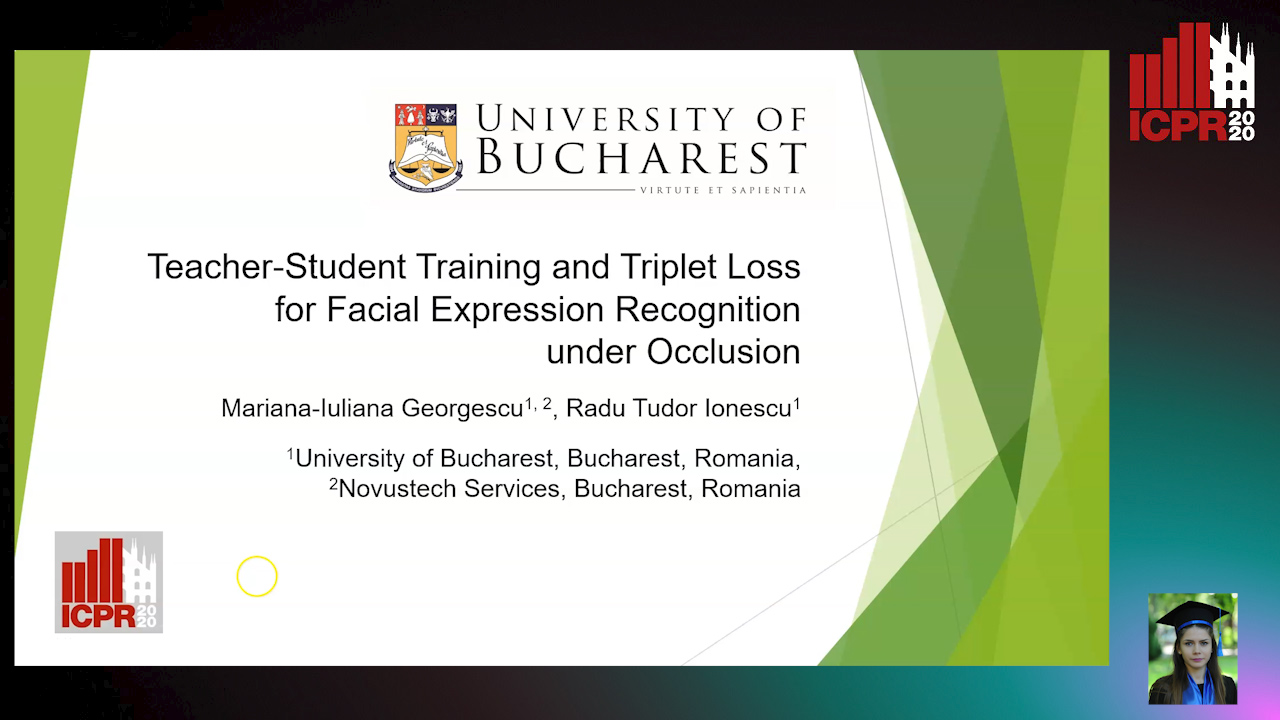Radu Ionescu
Paper download is intended for registered attendees only, and is
subjected to the IEEE Copyright Policy. Any other use is strongly forbidden.
Papers from this author
Teacher-Student Training and Triplet Loss for Facial Expression Recognition under Occlusion
Mariana-Iuliana Georgescu, Radu Ionescu

Auto-TLDR; Knowledge Distillation for Facial Expression Recognition under Occlusion
In this paper, we study the task of facial expression recognition under strong occlusion. We are particularly interested in cases where 50% of the face is occluded, e.g. when the subject wears a Virtual Reality (VR) headset. While previous studies show that pre-training convolutional neural networks (CNNs) on fully-visible (non-occluded) faces improves the accuracy, we propose to employ knowledge distillation to achieve further improvements. First of all, we employ the classic teacher-student training strategy, in which the teacher is a CNN trained on fully-visible faces and the student is a CNN trained on occluded faces. Second of all, we propose a new approach for knowledge distillation based on triplet loss. During training, the goal is to reduce the distance between an anchor embedding, produced by a student CNN that takes occluded faces as input, and a positive embedding (from the same class as the anchor), produced by a teacher CNN trained on fully-visible faces, so that it becomes smaller than the distance between the anchor and a negative embedding (from a different class than the anchor), produced by the student CNN. Third of all, we propose to combine the distilled embeddings obtained through the classic teacher-student strategy and our novel teacher-student strategy based on triplet loss into a single embedding vector. We conduct experiments on two benchmarks, FER+ and AffectNet, with two CNN architectures, VGG-f and VGG-face, showing that knowledge distillation can bring significant improvements over the state-of-the-art methods designed for occluded faces in the VR setting. Furthermore, we obtain accuracy rates that are quite close to the state-of-the-art models that take as input fully-visible faces. For example, on the FER+ data set, our VGG-face based on concatenated distilled embeddings attains an accuracy rate of 82.75% on lower-half-visible faces, which is only 2.24% below the accuracy rate of a state-of-the-art VGG-13 that is evaluated on fully-visible faces. Given that our model sees only the lower-half of the face, we consider this to be a remarkable achievement. In conclusion, we consider that our distilled CNN models can provide useful feedback for the task of recognizing the facial expressions of a person wearing a VR headset.